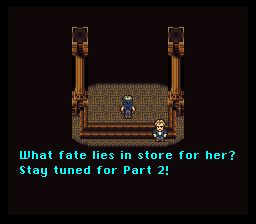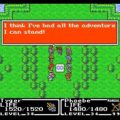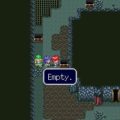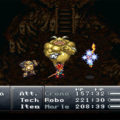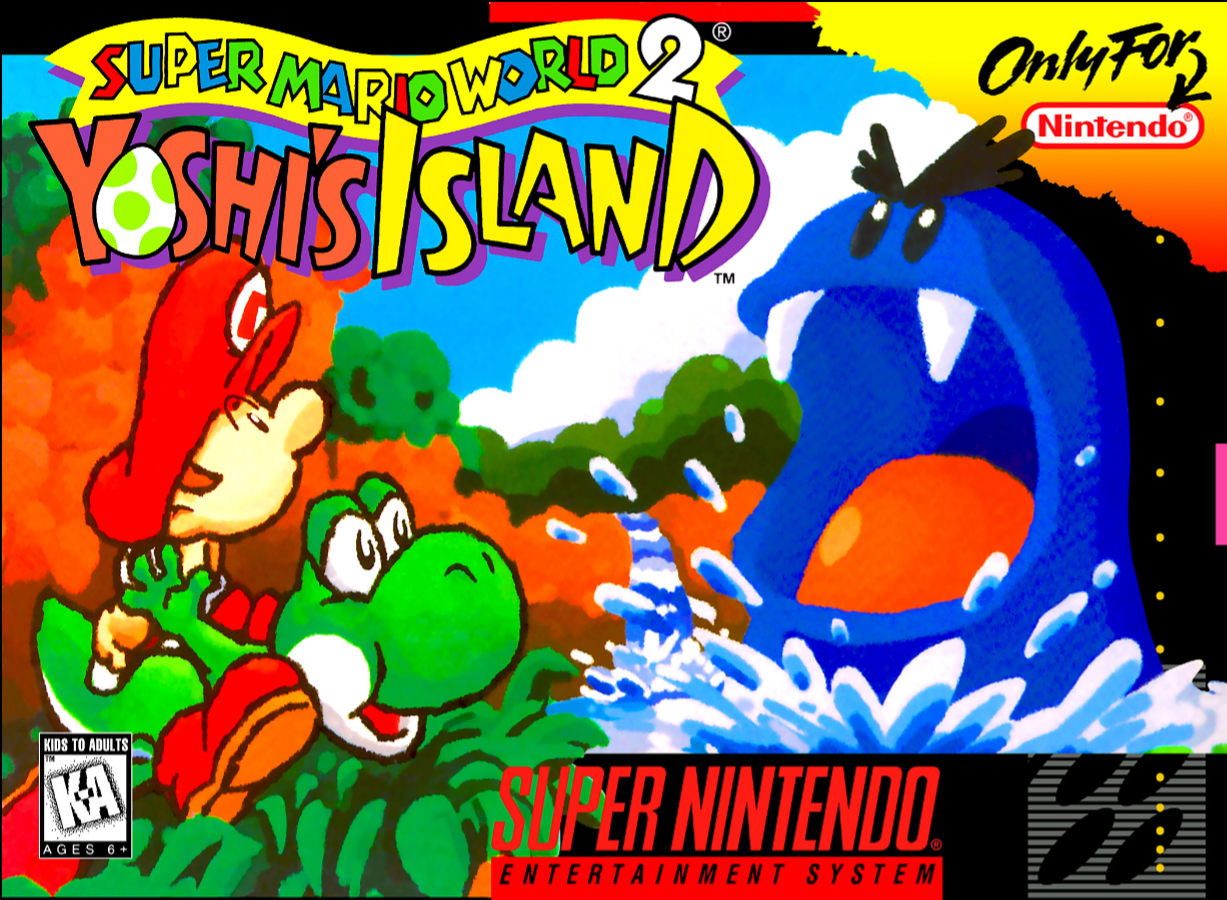Final Fantasy Retrospective: Final Fantasy VI

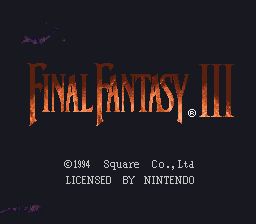 It cannot be overstated how important Final Fantasy VI is to a lot of people. Since its release in Japan on April 2nd, 1994, it has touched the lives of countless players with its rich narrative that covers topics one would’ve never have expected to come up in video games in the 1990s. Or it did in Japan. Some of those heavier subjects, especially suicide, are deliberately obfuscated by the game’s translation, and may have required a very delicate touch due to the nature of the subject.
It cannot be overstated how important Final Fantasy VI is to a lot of people. Since its release in Japan on April 2nd, 1994, it has touched the lives of countless players with its rich narrative that covers topics one would’ve never have expected to come up in video games in the 1990s. Or it did in Japan. Some of those heavier subjects, especially suicide, are deliberately obfuscated by the game’s translation, and may have required a very delicate touch due to the nature of the subject.
In the thirty years since, it has topped lists of people’s favourite Final Fantasy games, their favourite SNES games, their favourite RPGs, their favourite video games in general. Final Fantasy VII may have been destined to put the series on the map, but many of those who celebrate Final Fantasy VI first experienced it long before it was popular and perhaps this made it feel all the more special. It was, at the time, the third game in the series that players in North America knew about and was a hidden gem to be discovered while browsing the shelves at the video game rental shop.
But that’s not to say that those who played the seventh game first and then went back to play the older titles don’t also have a claim to nostalgic fondness for the game. Even players who don’t have memories of the game going back thirty years can still be moved by a story told in such a manner, with well crafted sprites and gorgeous music, a fun battle system and basically everything they’ve come to expect from a classic Final Fantasy game. Thus, to celebrate the game’s thirty year anniversary, please join me as we discuss what made Final Fantasy VI one of the greatest games of all time.
It’s no secret that video game music owes a lot to the classical composers of old, so it shouldn’t come as a surprise that fans booting Final Fantasy VI up for the first time heard an interpretation of “Sonnenaufgang” – it translates to “Sunrise” in English – in the title sequence. Sonnenaufgang is better known as the opening fanfare of Also sprach Zarathustra by Richard Strauss. It’s possibly a very unfortunate choice of opening because of its indelible association with both 2001: A Space Odyssey and nearly all of the movie’s parodies throughout the years. As such, new players might be expecting familiar elements from the movie or its parodies to show up in the game somewhere, up to and including exaggeratingly slow motion gravity and a monolith that has everything (or sometimes nothing) to do with the plot. Fortunately, these elements do not appear in Final Fantasy VI because by now, they feel incredibly overdone and might undermine the game in unfortunate ways.
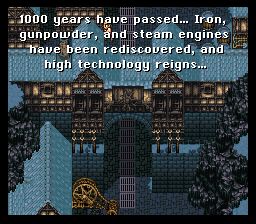 While it is true that in the western world, Sonnenaufgang is often used to suggest that any of a number of familiar elements from 2001 will be present, it is instead sometimes used to denote something significant is going to happen, as in the BBC’s coverage of the Apollo space missions, and it is this usage that Nobuo Uematsu likely wished to invoke for Final Fantasy VI. At the time it was released, Final Fantasy VI had the grandest scope of any Final Fantasy game that had come before it, from the number of playable characters to the amount of story content present in the game. Even the final dungeon was far more epic than final dungeons in the past, being one of the first in the entire genre to split the party into several groups in order to make it through. Certainly bigger than before and making more use of the technology available in the Super Famicon and SNES, Final Fantasy VI represented the absolute pinnacle of what the series could be on Nintendo’s second home console.
While it is true that in the western world, Sonnenaufgang is often used to suggest that any of a number of familiar elements from 2001 will be present, it is instead sometimes used to denote something significant is going to happen, as in the BBC’s coverage of the Apollo space missions, and it is this usage that Nobuo Uematsu likely wished to invoke for Final Fantasy VI. At the time it was released, Final Fantasy VI had the grandest scope of any Final Fantasy game that had come before it, from the number of playable characters to the amount of story content present in the game. Even the final dungeon was far more epic than final dungeons in the past, being one of the first in the entire genre to split the party into several groups in order to make it through. Certainly bigger than before and making more use of the technology available in the Super Famicon and SNES, Final Fantasy VI represented the absolute pinnacle of what the series could be on Nintendo’s second home console.
Sonnenaufgang is also fitting because this isn’t the first time Uematsu has directly referenced classical music in his soundtracks. Final Fantasy V shows Butz playing one of Claude Debussy’s Arabesques if the player manages to reach the end of the piano sidequest.
Sonnenaufgang soon transitions into an original piece by Uematsu as a brief history of the world is revealed to the player. In a world where a magic war was fought a thousand years ago, technology has replaced this terrible power, but some are trying to resurrect magic so that the world may be brought to submission once more.
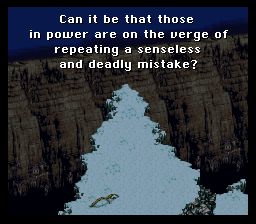
After a brief information dump, the first three characters arrive near the city of Narshe, piloting suits of Magiteck Armour. No one knew it at the time, but this is the first of what would become many appearances of characters named Biggs and Wedge in the Final Fantasy franchise, names derived from a pair of minor characters in the Star Wars franchise.
This is where we also see the first example of Ted Woolsey’s interesting translation work in action, for instead of Biggs and Wedge, English audiences are introduced to Vicks and Wedge. This is likely due to Ted Woolsey not realizing they were meant to be a reference, especially since they hadn’t yet become a staple of the series.
Biggs Vicks and Wedge are accompanied by a girl wearing a Slave Crown, a device which inhibits freedom of thought, essentially turning the unfortunate girl into an obedient drone. Unable to think for herself, she mindlessly obeys anyone in a position of authority over her and leads a siege on Narshe, where an Esper has recently been discovered, somehow hidden from the world for exactly a thousand years. Vicks and Wedge are soldiers in the Gestahl Empire, which desires the powers that the Esper contains, and the girl is an unfortunate prisoner in both body and mind.
Huh. Are we the bad guys this time? Are we actually playing as the villains?
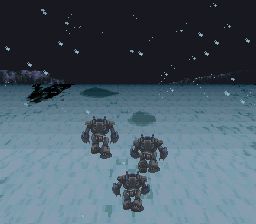 Incidentally, although it’s skippable, why would you choose not to watch three giant suits of armour marching across the snow while one the of the best opening themes in the series plays?
Incidentally, although it’s skippable, why would you choose not to watch three giant suits of armour marching across the snow while one the of the best opening themes in the series plays?
Past games have used the first few battles as a kind of tutorial for the game, letting players get used to the ATB and allowing characters a level up or two to give them a sense that their power was growing quickly enough to be satisfying. Final Fantasy V started everyone at level one, but scripted the first two battles. The goblins Butz faced wouldn’t be able to kill him by not being strong enough, and they dropped enough experience points so that he leveled up once before reuniting with Galuf and Lenna. Final Fantasy IV was the first game to show off the brand new ATB system, and so the first enemy to pose even a mild threat to the party was the Mist Dragon, the very first boss. Everything else was so slow, even the goblins, a player could just keep their thumb on the X button during battles and that would be all they’d need. Nothing was fast enough to get a hit in until the Mist Dragon. Despite having no ATB system yet, Final Fantasy III‘s starting dungeon could qualify here, with all of its goblins awarding enough experience that players could grind a few levels if they really wanted to. Goblins have pretty much been a staple of the series as cannon fodder for beginners.
Final Fantasy VI‘s tutorial level is Narshe, and players are granted a little bit of extra power in the form of their Magiteck Armour’s built-in attacks. Instead of goblins, players must defend their characters against the soldiers of Narshe and their hounds. In fact, for the first time in the main series, the iconic Goblin is missing, as if this is the first of many steps the series would take towards a more sophisticated, modern experience.
Incidentally, the girl apparently fried fifty of the Gestahl Empire’s soldiers and is only level three, so those soldiers couldn’t have dropped more than two or three points of experience each.
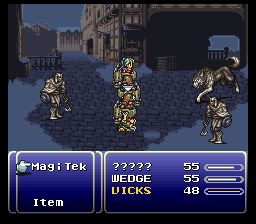 Another thing the tutorial level does is, by giving everyone Magiteck Armour, it makes Vicks, Wedge and the mysterious girl too big to really have the run of the city. They can’t explore as much as a player might want to, so players are essentially herded right to the esper. Vicks and Wedge wouldn’t be welcome in Narshe anyway, and narratively it makes little sense for them to be allowed to explore the town.
Another thing the tutorial level does is, by giving everyone Magiteck Armour, it makes Vicks, Wedge and the mysterious girl too big to really have the run of the city. They can’t explore as much as a player might want to, so players are essentially herded right to the esper. Vicks and Wedge wouldn’t be welcome in Narshe anyway, and narratively it makes little sense for them to be allowed to explore the town.
Every battle in Narshe is scripted, including the series’ first pincer attack, where enemies either surround or are surrounded by the party. Not only does a pincer prevent escape until one side of enemies are killed, it also means that those on the receiving end of the attack are susceptible to back attacks from the enemies behind them. That said, it’s almost impossible to die during this level because the skills used while driving Magiteck Armour are free from MP cost and every armour unit comes with a healing skill. The mysterious girl also has a Cure spell that can be used outside of battle, and it doesn’t cost a lot to use.
Once inside the caves of Narshe, the game transitions from scripted tutorial battles to random encounters, having deemed the player ready for them. The encounters shouldn’t be that difficult for a party riding Magiteck Armour. Vicks and Wedge have already gained a couple levels in Narshe itself and can gain a few more if the player feels it’s necessary, but it really isn’t. Just in case, though, there’s a save point in the cave, in case players are worried about losing out on ten minutes or less of progress.
Players also won’t lose out on any customization they’ve made to the menus, either. This sixth entry in the main Final Fantasy series is one of the most customizable games on the SNES, although most of those customization involve how the menu looks.
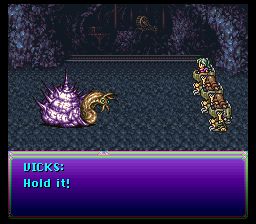 Just a few feet away from the save point, the first boss of the game lies in wait. Just like in Final Fantasy IV, this is a tutorial boss which has a phase where attacking it causes a serious counter attack. For a while, the developers at Squaresoft wanted their tutorial bosses to teach players that there are sometimes mechanics to boss fights that they need to look for, and the Whelk is no exception.
Just a few feet away from the save point, the first boss of the game lies in wait. Just like in Final Fantasy IV, this is a tutorial boss which has a phase where attacking it causes a serious counter attack. For a while, the developers at Squaresoft wanted their tutorial bosses to teach players that there are sometimes mechanics to boss fights that they need to look for, and the Whelk is no exception.
The one thing I hate about the Whelk fight is that the game is brutal with its timing. You mustn’t attack its shell or it’ll counter with a powerful lightning attack on the entire party, but it’ll withdraw into its shell in the time between a player selecting a character’s attack and the character actually performing the attack. With only the shell available now, they’ll attack it even though they’ve been told not to and will bring death and destruction to all. This is pretty much the one and only drawback to when Squaresoft figured out how to redirect your party members’ attacks way back in Final Fantasy III. There’s no way to tell them to hold back other than to know the Whelk’s timing and try to hold them back yourself.
The Whelk is the last line of defense Narshe has against Vicks, Wedge and the mysterious girl. Once past it, all that’s left is to secure the Esper and bring it back with them. However, the Esper seems to have other plans. This is where players are first introduced to one of the biggest strengths of the game. Even more so than the previous two games, Final Fantasy VI tells its story in various ways, including during battle. The mysterious girl finds herself compelled to approach the Esper, and after a silent interaction between the two, the Esper evaporates Wedge with a bright burst of light. Vicks quickly follows Wedge into oblivion. Maybe Vicks and Wedge should’ve leveled up a little after all.
It is through this interaction with the Esper that the mysterious girl is freed from the empire’s control. She wakes up in Narshe and is a bit groggy, but her mind is finally her own again.
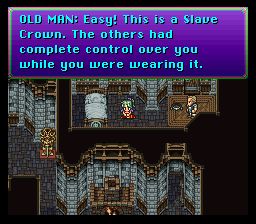 Now that the Slave Crown is off, it will never show up again. You’d think it would be used once or twice more in the future, but it isn’t. The game needed an excuse for why Terra was there to attack Narshe and came up with the Slave Crown, but there wasn’t a place for it anywhere else in the plot. It’s not terrible storytelling, but it does sort of feel like the kind of detail that someone inexperienced with fiction would come up with, since the characters don’t even bring it up in casual conversation beyond the one brief mention as soon as Terra awakens.
Now that the Slave Crown is off, it will never show up again. You’d think it would be used once or twice more in the future, but it isn’t. The game needed an excuse for why Terra was there to attack Narshe and came up with the Slave Crown, but there wasn’t a place for it anywhere else in the plot. It’s not terrible storytelling, but it does sort of feel like the kind of detail that someone inexperienced with fiction would come up with, since the characters don’t even bring it up in casual conversation beyond the one brief mention as soon as Terra awakens.
The Russian playwright Anton Chekhov once wrote,
“Remove everything that has no relevance to the story. If you say in the first chapter that there is a rifle hanging on the wall, in the second or third chapter it absolutely must go off. If it’s not going to be fired, it shouldn’t be hanging there.”
It can be argued that the Slave Crown is useful to the story in that they want to give Terra an excuse to fight for the Empire at the very start of the story, and Final Fantasy IV‘s “I was mind controlled again” plot point was a little goofy after a while. An actual mind control item is a good compromise for using the same idea in two different games. That said, I feel like it can still qualify as a Chekhov’s Gun that isn’t fired, since it’s brought up right at the beginning and then no one says anything about it for the rest of the game.
Unfortunately, this girl can’t remember a thing except her name, making this the third game in a row (not counting Mystic Quest) where one of the playable characters has amnesia. But whereas the amnesia in Final Fantasy IV was there to prevent the player from benefiting from having a wise sage in the party right at the beginning of the game (he couldn’t remember his high level spells, so players weren’t allowed to easily mow down bosses), the amnesia in both this game and in Final Fantasy V served the plot and prevented players from finding out certain things too early. At this point in the game, all that is known about this girl is that she was born with magic and the Empire used her as a puppet. And that her name is Terra.
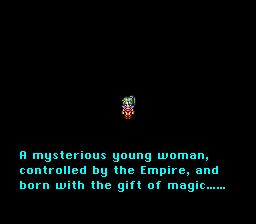
Terra comes with Fire and Cure spells already learned. Given that she won’t have any easy access to shops for the first couple hours, her Cure spell is incredibly important, as are any Tonics and Potions she picks up along the way.
This is another example of the game’s odd translation choices rearing its ugly head. Given that this was only the third Final Fantasy game, at the time, to be released in English, there hadn’t been any consistency with item names. Ted Woolsey chose to translate the standard Potion as “Tonic” and the Hi-Potion became a “Potion”.
Terra doesn’t have a lot of time to rest, though. When soldiers come and demand Terra be turned over to them, she attempts to make her escape, but no Final Fantasy character can truly operate by themselves for very long. Just in case, though, there’s a save point and there’s also a chest nearby with a Sleeping Bag that she can use to regain her HP and MP.
Terra’s help comes thanks to the timely arrival of the thief Locke, who rescues her from the soldiers, then flees with her to Figaro to meet the king.
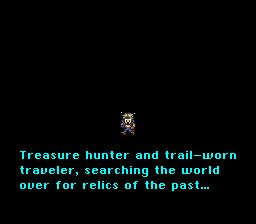
Locke, being a thief, has access to the Steal command. When Steal was first introduced in the series, it wasn’t very good. It required a lot of work to make it worth using in Final Fantasy III, and it barely worked in Final Fantasy IV when trying to get Edge to steal something. Final Fantasy V improved Steal to the point where it was worth having a Thief in the party for most of the game. Not only that, but there were some decent weapons and armour available to the player if they stole them.
In Final Fantasy VI, Locke’s Steal command works so much more often than Edge’s. It’s highly possible players won’t ever need to buy a Tonic or Potion during the entire rest of the game, thanks to Locke. Bosses have some really good items to steal, too. Plus, items and equipment aren’t the only things Locke can take, but I’ll get to that part of the game soon.
At this point in the game, Terra’s biggest strength is in the fact that she has access to magic, a feat which few humans can boast. As was said before, her Cure spell will help preserve the party’s supply of healing items for when she’s not around. There is more to her character, but not even she’s aware of the full extent of her powers…
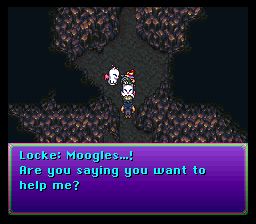 Locke’s battles in the Narshe Mines remind me of a tower defense game, in a way. Enemy soldiers make gradual progress through a maze and must be defeated by the heroes before they reach the end. Fortunately, Locke isn’t alone, for he has help from a group of moogles. These moogles offer help seemingly out of nowhere and then remove themselves from the story just as quickly, but it’s a great introduction to this new mode of gameplay. It’s unfortunate that it only comes up once more in the game, but it’s possible that the developers intended for larger scale battles like this to become more common in the series. There’s a full side quest where similar battles play out in Final Fantasy VII, but then a similar style of gameplay doesn’t return to the series until Crystal Guardians in 2008 and Final Fantasy Crystal Chronicles: My Life as a Darklord in 2009.
Locke’s battles in the Narshe Mines remind me of a tower defense game, in a way. Enemy soldiers make gradual progress through a maze and must be defeated by the heroes before they reach the end. Fortunately, Locke isn’t alone, for he has help from a group of moogles. These moogles offer help seemingly out of nowhere and then remove themselves from the story just as quickly, but it’s a great introduction to this new mode of gameplay. It’s unfortunate that it only comes up once more in the game, but it’s possible that the developers intended for larger scale battles like this to become more common in the series. There’s a full side quest where similar battles play out in Final Fantasy VII, but then a similar style of gameplay doesn’t return to the series until Crystal Guardians in 2008 and Final Fantasy Crystal Chronicles: My Life as a Darklord in 2009.
Once escaped from Narshe, Locke takes Terra to Figaro with the intention of hiding her from the Empire, but somehow General Kefka gets wind of this and confronts the king of Figaro.
Edgar, the king of Figaro, is considered a Machinist for his use of various machinery in battle. He often does more damage with the machinery than if he were to just attack with his equipped weapon, and certain machines also act as tactical support. There’s one that confuses all enemies, one that does poison damage and inflicts the poison status, there’s a chainsaw that does a huge amount of damage randomly, a drill that does slightly less than a huge amount of damage, but inflicts it a little bit more reliably. The bottom line is, Edgar is a high damage character with not a lot of downsides. This isn’t like Final Fantasy IV where some characters are physically weak for story reasons, which means no one wants them in the party. Almost every character is strong in their own way, and Edgar is no exception.
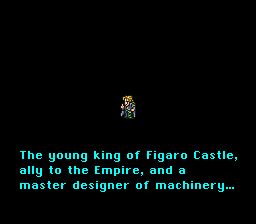
So when Kefka confronts him, he doesn’t back down. He’d already been charmed by her beauty – apparently a lot more than her abilities – and so he’s decided to defy his allies in the Empire in order to keep Terra from being recaptured.
This is the first we see of General Kefka. Kefka is introduced as a tyrant who is not above destroying things to get his way. He attempts to burn Figaro Castle to the ground in order to flush out Terra, but is foiled when the castle submerges into the sand and Terra, Locke and Edgar ride off on chocobos.
Locke knows of a man in a band of rebels known as the Returners who might be able to help Terra, his name is Banon and he has a base in South Figaro. However, he puts his foot in his mouth by explaining to her how unique magic is. “No human is born with these powers.” Terra has just been told that she’s not human, which is not something you want to hear when you’re trying to come to terms with how different you are from others, and especially if there are people who might hate or fear you just for who you are.
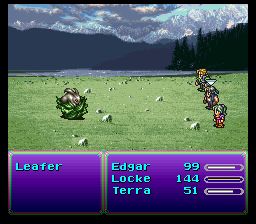 Edgar’s Tools are a huge blessing for the party as they journey through the cave to South Figaro. His AutoCrossbow alone hits every target on screen and kills everything in one hit, owing to its ability to deal what is, at this point in the game, a decent amount of damage. As an added bonus, the damage AutoCrossbow does is the same if Edgar is in the back row, so getting a Back Attack here won’t hurt the party in the slightest.
Edgar’s Tools are a huge blessing for the party as they journey through the cave to South Figaro. His AutoCrossbow alone hits every target on screen and kills everything in one hit, owing to its ability to deal what is, at this point in the game, a decent amount of damage. As an added bonus, the damage AutoCrossbow does is the same if Edgar is in the back row, so getting a Back Attack here won’t hurt the party in the slightest.
When the party reaches South Figaro, the game introduces a system that kind of resembles the job system from Final Fantasy V. Relics offer a number of effects including the ability to sprint like a Thief, jump like a Dragoon, cover allies like a Paladin, even shield oneself from certain status effects, and each character can equip two of them. Due to a glitch involving the Evade stat doing nothing, Darkness also does nothing, meaning that the old meme about goggles doing nothing actually pertains quite unexpectedly to Final Fantasy VI and the Goggles relic. Dark is supposed to make it so that the affected character’s accuracy goes way down, but since no one has any evasion, someone who should only be able to hit 50% of the time will still hit 100% of the time.
Actually, hold on a minute. There’s a relic called Goggles which protects against Dark for 500 GP, but the Jewel Ring is being sold for 1000 GP and the game says it protects against both Dark and Petrify. I get that maybe players might want to conserve GP and buy the cheaper one, but it actually doesn’t take long to save up the GP to buy the Jewel Ring. If a player has enough to buy the Goggles, it literally only takes about two battles outside of Figaro in order to afford the Jewel Ring instead. This is assuming the player is living in a world where Dark actually does anything, of course, but if it did, the Goggles would still be worthless because the correct answer is the Jewel Ring.
According to Final Fantasy fan sites the Jewel Ring isn’t actually supposed to protect against Dark, but that’s okay because of the glitch mentioned earlier that makes Dark a toothless status ailment. That said, you’d think this would be an error that would be caught before the game shipped, but Final Fantasy XIV is constantly needing to correct item and skill descriptions, so it’s probably more common than you’d think to have descriptions like this be wrong in some manner, even in otherwise highly polished games.
And yes, money is still GP at this point in the series. Most of the articles already written in this retrospective series say “gil”, but up until this point in the series, North America hasn’t actually been introduced to the word. It was GP in Final Fantasy IV and Final Fantasy: Mystic Quest, and in the original Final Fantasy, the party accumulated Gold. We’re still one game away from the currency finally being translated as Gil, and that’s not the only translation clarification for consideration in the PlayStation generation. The only reason “gil” has been featured in the retrospectives was because of either fan translations putting the word in, or because the first two Final Fantasy articles were based on the Game Boy Advance versions.
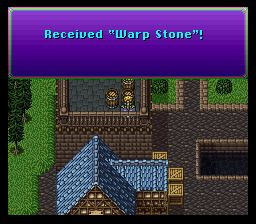 Various barrels and boxes in Figaro contain items, but as the game progresses, items will be found less and less in this manner. That’s okay, though, because this encourages players to check everything, especially clocks. Clocks contain free Elixir, which is a very valuable resource in a Final Fantasy game. There’s nothing like swallowing a potion that restores a character’s health and magic to full.
Various barrels and boxes in Figaro contain items, but as the game progresses, items will be found less and less in this manner. That’s okay, though, because this encourages players to check everything, especially clocks. Clocks contain free Elixir, which is a very valuable resource in a Final Fantasy game. There’s nothing like swallowing a potion that restores a character’s health and magic to full.
At this point, there’s not much that can be done by the player in the city of South Figaro, but that’s not all that’s available. North of town is a house where Edgar’s brother Sabin has been living. The player actually names Sabin back in Figaro Castle, before Kefka’s arrival, but Sabin doesn’t actually join the party until meeting him in the nearby mountains. Sabin’s old pugilist master has been killed, and both him and another student named Vargas have ventured into the mountains, but this knowledge isn’t yet available to the party. In the absence of anything else to do, they check out Mt. Kolts, which is on the way to the Returner base anyway.
As the party climbs the mountain, a shadowy figure is seen climbing ahead of them. With the party averaging level 8 before they start climbing, Terra will have almost enough MP to keep everyone healed up, only running out right before the party reaches the save spot near the top. It’s doable, but the mountain seems to be balanced for Terra being level 9. A Tent, found in a treasure chest, is clearly intended to top everyone up, but at this point in the game, only Terra has an MP stat, so a better idea would be to save the Tent and use a Sleeping Bag on Terra only, after using up the last of her MP topping everyone else’s HP up.
This is pretty much how item hoarding begins. If one isn’t careful, that Tent will still be in the inventory at the end of the game when facing the final boss!
Speaking of magic, there’s a scene that would play out in battle if Terra uses magic at any time between Figaro Castle and Mt. Kolts, but once the party climbs the mountain, the scene is no longer available. Edgar flips out if he sees Terra cast magic because despite knowing that Terra can cast it, he’s never seen it actually being cast before. After he and Locke make a big deal over it, Locke declares that there’s no difference between Terra and themselves, save that she can cast magic. Grateful that Locke made up for his earlier gaffe, she thanks the both of them and they resume the fight, which the enemies have been patiently waiting for.
It’s probably too difficult for Edgar to avoid magic anyway. It would require the player to never use magic with Terra or anyone else who joins the party and is capable of it, and once magic opens up for everyone to use, Edgar would have to be purposely left out of the loop, never given magic to use, nor put in the party with anyone who has learned and who intends to use magic. It should therefore be assumed that if he doesn’t flip out at seeing magic during battle, he probably reacts with surprise at seeing Terra healing his wounds outside of battle, and we just don’t see it played out.
At the top of the mountain, the man in shadow reveals himself to be Vargas, a man with seemingly a bone to pick with Sabin and who tries to take it out on the party, but liberal use of the Cure spell to heal up and the Fire spell on both Vargas and his bear allies, as well as mild use of the Bio Blaster, will make short work of him.
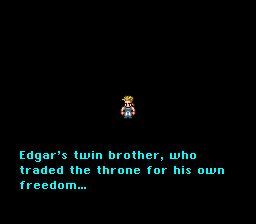
Suddenly Sabin confronts Vargas, and Vargas accuses Sabin of stealing their master, Duncan’s, favour. Vargas is especially resentful because Duncan was his father, and in a fit of rage at the thought that Sabin would be chosen to be Duncan’s successor, Vargas killed him. Vargas killed his own father.
Sabin, however, reveals the truth, that Vargas was indeed chosen to be Duncan’s successor, but Vargas doesn’t want to hear it, blows everyone else away with a powerful wind, and starts a one on one fight with Sabin.
Sabin’s main gimmick in battle is that if the player inputs commands like they’re playing a fighting game, he’ll perform a powerful move. This is a mechanic that Squaresoft wanted so hard to make work. Variations of it would show up in future games, but it never really caught on, so the series would eventually stop trying. Interestingly, this isn’t the only RPG on the Super Famicom that would make use of fighting game style commands, and it seems to suggest that the desire of Japanese developers to try to innovate on the genre started long before American developers like Phil Fish began speaking derisively about them.
There are certain techniques that Sabin can learn which are easy to input and do a ton of damage to every enemy on screen. However, in this first battle controlling him, the player can automatically defeat Vargas by selecting a simple Left-Right-Left “Pummel” command. Vargas can’t believe that Sabin already knows this most basic of basic technique and is gone. I guess he dies, but it’s never really said.
Sabin decides to join the party and the Returners in order to bring peace to the world, and the party might be a bit underleveled because Sabin joins at level 12. The party can comfortably defeat Vargas with an average of level 9 to 10, so it sort of feels like the developers either had no faith in the player’s ability to win the battle, or they thought there’d be a lot more random battles between Figaro Castle and Mt. Kolts.
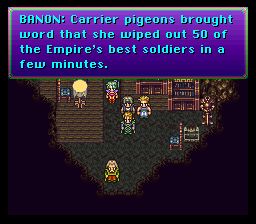 There’s nothing in the valley beyond Mt. Kolts, which means players have no choice but to make their way to the Returner’s Hideout. While there, the party introduces Banon to Terra, who is desperate for her help. Everyone in the Returners has a reason to fight the Empire, but Terra’s mind is blank, her memories gone. She thinks she doesn’t have a reason to fight the Empire, no one to fight for. But I think that she has every reason to fight the Empire. For taking away her personal agency and forcing her to fight against her will, causing countless innocent people to die by her hands, she should want to fight against the Empire, to make sure they never do this sort of thing to anyone else. There can’t be more than one Slave Crown in the world, an Empire who has that kind of technology would’ve made more than one of it. We never hear of any other brainwashed soldiers fighting for the Empire, but it wouldn’t surprise me if they have many such crowns and placed them on the heads of captured enemy soldiers. It’s not like whatever the crown is made of exists in very limited quantities, right?
There’s nothing in the valley beyond Mt. Kolts, which means players have no choice but to make their way to the Returner’s Hideout. While there, the party introduces Banon to Terra, who is desperate for her help. Everyone in the Returners has a reason to fight the Empire, but Terra’s mind is blank, her memories gone. She thinks she doesn’t have a reason to fight the Empire, no one to fight for. But I think that she has every reason to fight the Empire. For taking away her personal agency and forcing her to fight against her will, causing countless innocent people to die by her hands, she should want to fight against the Empire, to make sure they never do this sort of thing to anyone else. There can’t be more than one Slave Crown in the world, an Empire who has that kind of technology would’ve made more than one of it. We never hear of any other brainwashed soldiers fighting for the Empire, but it wouldn’t surprise me if they have many such crowns and placed them on the heads of captured enemy soldiers. It’s not like whatever the crown is made of exists in very limited quantities, right?
“Hey, don’t lose this Slave Crown. We used up our entire supply of Hypnosium in order to make it.”
When Terra finally does decide to join the Returners, Banon calls a meeting to discuss what they should do next, and to drop some lore. It seems like there’s some connections between the Empire’s Magiteck and spirits known as Espers. The creature that Terra reacted to and which evaporated Vicks and Wedge was an Esper that the Empire was trying to secure for themselves. If Terra were to try to talk to the Esper in Narshe, maybe it’ll wake up and help the Returners.
However, tragedy strikes and it’s as everyone has feared. There have been whispers up until now from people who suspected the Empire might march on Figaro and sure enough, South Figaro has been attacked and taken by force. Locke is promptly volunteered for the task of checking out Figaro and seeing if anything can be done there. The best bet for Banon is to escape via raft down the Lete river to Narshe with Terra, Edgar and Sabin. Banon joins the group at level 7 and unfortunately, this is pretty much an escort mission where, if Banon is knocked out, it’s game over no matter how much Phoenix Down the party has.
Oops, I mean “Fenix Down”. Certain items have been translated in interesting ways, courtesy of translator Ted Woolsey. As has already been mentioned, the basic Potion is a Tonic in this game and the Hi-Potion is just known as a Potion. Also translated strangely, Ether is instead known as Tincture here. This is pretty much only the third main series Final Fantasy game to be released outside of Japan, fourth overall, and I can accept that item names weren’t set in stone thirty years ago.
It’s strange that Fenix Down is what Woolsey went with, considering there would’ve been enough space to spell it out properly. It makes one assume that maybe he wasn’t familiar with the firebird of legend. At least it’s a lot more accurate than the Final Fantasy IV translation was, which just called it Life, along with all the Potions being called Cure items instead, no doubt named after the spells that featured similar effects.
Banon also cannot be renamed, nor does he have an equipment screen in the menu to allow for players to remove or change his gear. It’s very clear that he’s not actually a playable character, he’s strictly a guest, but one which the player can’t ignore. The only saving grace is that Banon comes with an ability called Healing, which he can use for free to keep everyone’s HP topped up and which will free Terra up to use Fire a lot more during the raft ride down the Lete River.
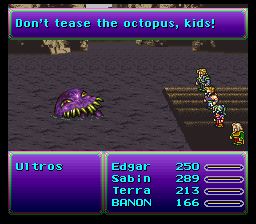 Eventually, the party meets an octopus creature known as Ultros, whose tentacles keep the party on their toes and deal way more damage than they have any right to. A single Tentacle has the potential to defeat Terra in one hit, and definitely will kill Banon in one hit unless he’s put in the back row. Having him on Health duty is a must here, but bad luck can quickly cascade to worse luck and it’s possible for the party to be defeated and the player would have had no way to have reasonably prevented it.
Eventually, the party meets an octopus creature known as Ultros, whose tentacles keep the party on their toes and deal way more damage than they have any right to. A single Tentacle has the potential to defeat Terra in one hit, and definitely will kill Banon in one hit unless he’s put in the back row. Having him on Health duty is a must here, but bad luck can quickly cascade to worse luck and it’s possible for the party to be defeated and the player would have had no way to have reasonably prevented it.
By some miracle, the party manages to defeat Ultros, but due to difficulties finishing him off, Sabin is washed down the river alone and apart from the rest of the Returners…
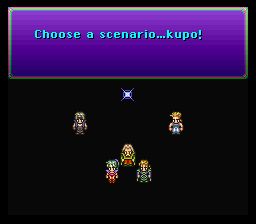
Perhaps because Final Fantasy VI has such a large cast, the game makes use of various ways to get players used to controlling as many characters as it possibly can. After the fight against Ultros, the narrative splits into three branches. One branch follows Locke as he infiltrates South Figaro and tries to undermine the efforts of the Empire. One branch follows Banon and the rest of the Returners as they attempt to get Terra safely to Narshe. One branch follows Sabin as he finds himself getting involved in increasingly insane incidents as he tries to find his way back to his friends.
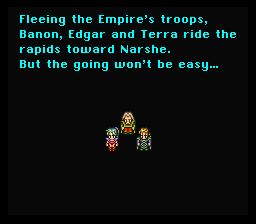 Following Banon sees the party continue to drift down the river on their raft, fighting enemies that are so strong that it almost seems like everyone’s underleveled. Banon’s health gets dropped very nearly to 0 from one Fireball attack by a Pterodon, and the rest of the party don’t fare much better. At least everyone else can be grinded a bit before the river sequence, but there is absolutely no way to grind him before the party is forced to take him along on a mission where he’s the weakest character, and where him dying means it’s game over.
Following Banon sees the party continue to drift down the river on their raft, fighting enemies that are so strong that it almost seems like everyone’s underleveled. Banon’s health gets dropped very nearly to 0 from one Fireball attack by a Pterodon, and the rest of the party don’t fare much better. At least everyone else can be grinded a bit before the river sequence, but there is absolutely no way to grind him before the party is forced to take him along on a mission where he’s the weakest character, and where him dying means it’s game over.
Well, it’s not quite game over. Final Fantasy VI contains a system where, if the party is defeated, they respawn at the last save point with all of the experience they gained prior to their death. Nothing else carries over, like items stolen from enemies and looted from treasure chests, but this is definitely a good system for players who find trying to keep Banon alive to be a bit unfair due to overtuned enemies and a very disadvantageously underpowered Banon. I’m going to blame this on his exceedingly low Stamina.
This is similar to how Dragon Quest has worked since the beginning of the series, but rather than stealing half of the party’s GP, Final Fantasy VI mercifully leaves it alone.
The party arrives at Narshe before too long, but the guards won’t even let the group in, despite having both King Edgar of Figaro and Banon, the leader of the Returners accompanying Terra. The guards instead accuse Edgar of lying and they claim that they don’t even know Banon. Fortunately, Terra remembers the secret tunnels Locke used to smuggle her out of the city, and the trio sneak back in.
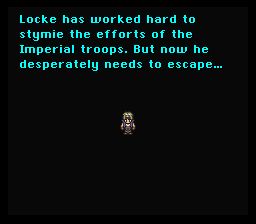 Meanwhile, Locke is doing some sneaking of his own, and players who explored South Figaro prior to this event will have an advantage over people who are exploring the city for the first time. Locke has been doing his best to undermine the soldiers occupying the city, but things might not be going very well for him, because the player joins him when he’s looking to escape and flee to Narshe.
Meanwhile, Locke is doing some sneaking of his own, and players who explored South Figaro prior to this event will have an advantage over people who are exploring the city for the first time. Locke has been doing his best to undermine the soldiers occupying the city, but things might not be going very well for him, because the player joins him when he’s looking to escape and flee to Narshe.
Interestingly, and perhaps mercifully, the game doesn’t load back at the last save point if Locke dies here, because there are several soldiers in South Figaro riding Magiteck Armour, and unless the player grinds a lot before they decide to see what happens when they talk to one of them, Locke is going to die. Instead, he respawns at a set position in town.
This is, in fact, how the game communicates a unique mechanic to this particular section of the game. The player finds out Locke needs to disguise himself in order to escape the city, but the only way he’ll be able to do so is to steal clothing from someone… while they’re wearing it. I’ve liberated clothing that I happened to discover on the streets of New York City just lying around, discarded, but I’ve never managed to liberate clothing while someone was wearing it. Locke is clearly operating on an entirely different level than myself.
Locke isn’t helped by the fact that the game just up and removed all of his gear the moment he left for South Figaro for some reason. It’s not going to do him much good here, but it would’ve been nice if he had been allowed to keep it on. Re-equipping someone after they’re forced out of your party by the story always feels like such a chore, like in Rhapsody II: Ballad of the Little Princess. There’s at least one chapter of that game where certain characters leave and re-enter the party several times within just a few minutes, and it feels like the game can’t make up its mind and is just trying to make life miserable for the player.
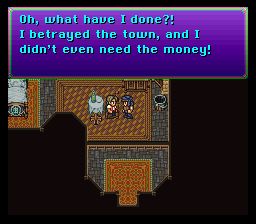 By finding the right characters to do battle with and steal clothing from, Locke sneaks over to the home of the richest person in town, who confesses that it was his love of money that caused him to betray South Figaro to the Empire. Sadly, the game doesn’t allow Locke to get any kind of karmic revenge. Instead, this is where the secret passage out of Figaro is located.
By finding the right characters to do battle with and steal clothing from, Locke sneaks over to the home of the richest person in town, who confesses that it was his love of money that caused him to betray South Figaro to the Empire. Sadly, the game doesn’t allow Locke to get any kind of karmic revenge. Instead, this is where the secret passage out of Figaro is located.
Along the way, he passes a room and stops to take a peek inside. This is where the player first meets Celes, who is introduced being beaten to a pulp by a pair of soldiers. Locke frees her, but despite her fatalistic attitude, he manages to convince her to come along.
I imagine it must’ve gone something like…
“Just leave me, please. I’m useless to you. I’m useless to the Empire. I’m useless to everyone.” Celes’s eyes were downcast, and bruised and darkened as they were from the violence visited upon her by the guards, they began to moisten. How far she had fallen, from a celebrated general to a treasonous traitor. If this was how the Empire treated those who grew a conscience, then maybe it would’ve been better if she hadn’t been born at all.
“Celes, if you’re telling the truth about turning your back on the Empire, you have a place with the Returners. We could use someone like you, who knows the ins and outs of how the Empire works! We can bring them down with your help.” Locke could see how upset Celes was and struggled to think of how to get through to her. Glancing ahead, it came to him, what he could do to hopefully gain her support or at least bolster her faith in their cause. “You know what? Here, there’s some stairs. It’s not much, but it’ll have to do. Stand right there, on the bottom step.”
Celes gave the treasure hunter a look that said she didn’t know what he was on about, but he nodded insistently. It seemed childish but after another moment of hesitation, she took that step and turned around. “What silly nonsense is this?”
“No, turn back around. It’s a trust fall. If you let yourself fall backwards, I’m going to show you that you can trust me to have your back, every step of the way. You could call it a leap of faith, if you’d like.” Locke’s eyes were full of sincerity as he spoke.
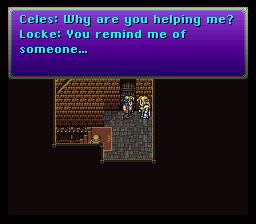 “This is dumb,” Celes protested, but she turned around. Still, she didn’t want to fully give in, and she asked, “Now what do I do?” It was more a delaying tactic than anything, although if she was hoping he would give up after a moment, she didn’t know him very well, or how long he could hold onto an idea once he committed to it.
“This is dumb,” Celes protested, but she turned around. Still, she didn’t want to fully give in, and she asked, “Now what do I do?” It was more a delaying tactic than anything, although if she was hoping he would give up after a moment, she didn’t know him very well, or how long he could hold onto an idea once he committed to it.
“Most people spread their arms out like…” He guided her arms so that they were out to her sides like a Black Waltz scarecrow. “Now, all you have to do is fall backwards and you’ll land in my arms. I’ll catch you, every time. I promise. Whenever you feel like you’re falling, I’ll be there to catch you, every single time.”
‘Oh goddess, this guy,’ Celes thought as she rolled her eyes. Was he really trying to support her or was he just trying to smooth talk her? She sighed and then said, “Okay, I-“
“And close your eyes,” Locke said. “Don’t forget to close your eyes, too. That’s the most important part.”
She closed her eyes. “Is there anything else? Do I need to wark like a chocobo, too?”
Whether the treasure hunter could detect her sarcasm or if it completely flew over his head, she couldn’t tell from his response. “Just let yourself fall backwards, and I’ll catch you.”
Inwardly, she sighed. It felt like they didn’t have time for this, but they were alone in the tunnel beneath South Figaro, there were no guards to be seen and no sound of footsteps echoing down behind them. She supposed they had all the time in the world, if Locke wasn’t treating his mission with any kind of urgency. It had been a while since she’d had any amount of hope, but a spark of it was beginning to form. Could Locke and the Returners really help her put a stop to the Empire? Could the world finally be at peace, and did she actually have a place in it?
Locke was about to say something more when Celes started to tip backwards. He braced himself for her weight and as she fell, the world broke around him. He could see a body falling, he could feel his stomach drop with her. His arm stretched out desperately, far too late to help her, and he could hear his voice crying out her name.
“RACHEEEEEEEEEEEEEEL!”
There was a weight in his arms. Where was he? Tunnel, he was in a tunnel. Rachel, was she alright? Did he catch… no, this wasn’t Rachel. This was…
Celes’s face was full of concern and he realized she was saying his name. “S-sorry,” he stammered. “I, um… I’m fine. I told you I’d catch you, right? I’ll always catch you.”
Celes could tell he wasn’t alright, but she decided not to press. Locke wondered if he should ask if he said anything out loud just now, as she fell, but knew how bad that would look, no matter what the answer was, and decided to stay silent. The pair quickly left the tunnels and an awkward silence blanketed the trip back to Narshe.
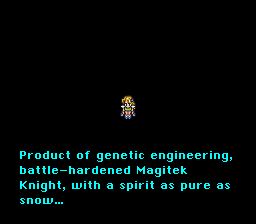
Celes joins at level 11, suggesting the base line that Locke should be at. She also comes with Ice and Cure spells, making her a very valuable ally for Locke. Making their way back through the cave between central and south Figaro should give Locke enough experience so that both he and Celes will be at level 12 when facing the TunnelArmr at the end of the cave.
This is a tutorial boss meant to get players used to Celes’s unique role in battle. Using her Runic command, she can redirect and absorb any magic cast on the party, cancelling it out and gaining MP from it in a kind of hybrid version of Osmose.
With the boss defeated, Celes and Locke can safely make it back to Narshe on their own, so players instead shift their focus to the last character left, Sabin. Unlike with Locke, Sabin keeps all of his equipment, meaning that the game unequipped Locke for no reason at all.
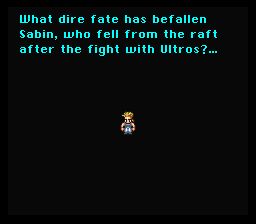 Sabin’s adventure is actually the longest scenario of the three, following him as he encounters several characters along the way and witnesses fantastic and horrible events unlike anything he’ll have seen before.
Sabin’s adventure is actually the longest scenario of the three, following him as he encounters several characters along the way and witnesses fantastic and horrible events unlike anything he’ll have seen before.
Sabin begins in a region of the world that will be new to players. There’s an optional building he can approach, and it’s probably a very good idea to go there because he’ll meet up with a ninja mercenary by the name of Shadow. Not only does he possess the ability to throw items – players will want to buy some Shuriken from a vendor who rides up on a chocobo – Shadow also brings his dog with him into battle. Interceptor will sometimes help to block attacks directed towards him and then will automatically counterattack.
Technically speaking, Shadow is an optional character at this point, and you could say he remains optional throughout the rest of the game through a cruel trick played on unsuspecting players, but as usual, I’m getting way ahead of myself.
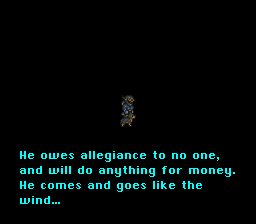
In their wanderings around the world map, looking for where to go next, Sabin and Shadow stumble upon an imperial camp and encounter Kefka. It’s Sabin’s first time seeing him, since he wasn’t at Figaro Castle when Kefka had tried burning it down.
Meanwhile, the game shifts to the point of view of a brand new character, Cyan. He serves the king of Doma and is currently defending his castle from the imperial attack. He starts at level 13 and this initial sequence is played in a solo manner. Random soldiers that he could defeat before attacking the enemy commander yield no experience and only a small potion of gold, so there’s no real point in attacking anyone else, other than to needlessly deplete resources. It’s not like the soldiers are demonstrably a threat. They constantly fall down trying to lay siege to the walls of the castle, acting more like Keystone Cops than imperial soldiers.
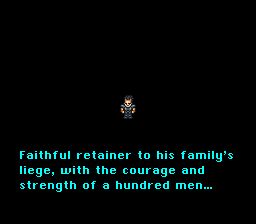
In battle, Cyan’s special skill is a technique known on the SNES as “SwdTech”, or swordtech. The idea is that the player selects it and then has to wait for it to slowly charge. Keeping it at 1 will unleash a simple attack called Dispatch, and presumably letting it charge will unleash progressively stronger attacks. That’s what you’d think, anyway. In practice, these attacks vary in usefulness. The level three attack, Slash, deals damage equal to half of the HP of one single opponent. This is great on opponents with a lot of HP, but does nothing against enemies immune to Death. As such, this attack will not get any use against bosses. What the game doesn’t tell you is that it also inflicts Sap, but if a player is waiting for Slash to charge in order to halve the HP of an enemy with low HP and then watch it die when the rest of their HP drains away, it’d be a much more efficient use of their time to just kill them in one hit with Slash. The single charge attack is unblockable and ignores defense.
The biggest weakness of this is that, not only does Cyan have to wait for the meter to charge slowly, this delays everyone else’s turn as well. Exactly zero damage is going out to enemies if the player is waiting for Cyan to be able to cast his QuadraSlice, a four strike attack that hits random enemies, also ignores defense, and is also unblockable. This attack requires seven charges of SwdTech, which is extremely hard to justify when the battle system is in Active mode. It’s no wonder this was eventually changed in newer versions of the game to allow for the player to just select the SwdTech automatically so that Cyan will charge it in the background as if he were a Final Fantasy IV character, and use it when it’s ready.
Although the enemy commander also gives no experience, he drops in two hits of Dispatch, as this is meant to be an easy tutorial fight to introduce players to the SwdTech command. With their commander defeated, the rest of the troops run because they’re directionless cowards who need someone to tell them what to do.
Secure in the knowledge that as long as they have their castle walls, they are invincible, the people of Doma plan to wait out the imperial attack, but Kefka has something awful up his sleeve.
 Meanwhile, Shadow and Sabin make their way through the imperial base, looting where they can and defeating troops who get in their way. This is where we observe a character that fans have come to love and appreciate, General Leo. He’s a decent man who wants what’s best for both the empire and the troops under his command. When a soldier declares that they’re willing to lay their life down in order to storm the castle, Leo points out that they’d be leaving their family behind if they do. As much as pro-war propaganda would have you believe that noble soldiers are nameless and faceless, sacrificing themselves for the good of everyone back home, every soldier has a family. These soldiers making the ultimate sacrifice are leaving behind loved ones who have to cope with their loss every day of their lives, and no amount of platitudes would make that go away. A soldier does not spring forth, fatherless and pure, from a vat of goo.
Meanwhile, Shadow and Sabin make their way through the imperial base, looting where they can and defeating troops who get in their way. This is where we observe a character that fans have come to love and appreciate, General Leo. He’s a decent man who wants what’s best for both the empire and the troops under his command. When a soldier declares that they’re willing to lay their life down in order to storm the castle, Leo points out that they’d be leaving their family behind if they do. As much as pro-war propaganda would have you believe that noble soldiers are nameless and faceless, sacrificing themselves for the good of everyone back home, every soldier has a family. These soldiers making the ultimate sacrifice are leaving behind loved ones who have to cope with their loss every day of their lives, and no amount of platitudes would make that go away. A soldier does not spring forth, fatherless and pure, from a vat of goo.
Do you remember the scene in Captain America: The First Avenger where he’s talking with Agent Carter at the end of the film and they’re tearfully making plans that they knew Steve Rogers would not be able to keep? He knew that Peggy would have to live with this for the rest of her life, but he also knew that he needed to do something to keep innocent lives from being lost. This is the point that General Leo is trying to make here. Don’t throw your life away to do something frivolous like trying to take Doma Castle. If you must give up your life, let it be for a much greater cause.
General Leo is, unfortunately for Kefka, a decent and honourable man, and Kefka chafes with him around. Eventually, though, Leo is summoned away by the emperor and Kefka sees his chance to commit war crimes. He’s literally just waiting around, rubbing his hands together in glee at the thought of all the war crimes he could be committing, and he jumps at the chance to poison the water supply of Doma as soon as Leo’s gone. Does he care that there are imperial soldiers being held as prisoners of war inside the castle? Not one bit, he wants everyone in the castle wiped out.
Later translations also include Kefka declaring that anyone who gets caught by the enemy basically deserves what they get, illustrating just how little value he places on human life. General Leo basically exists to make Kefka look even more monstrous.
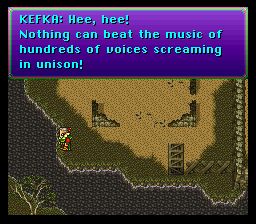 With Leo gone, the poison Kefka pours into the river permeates the entirety of Doma Castle, and the way the game presents it, it’s as if it’s an airborne poison and not a waterborne one. It acts more like a highly toxic gas than anything else, since everyone starts falling off of the top of the castle walls, and people are lying dead throughout the castle regardless of their proximity to the water. Somehow, Cyan is the only one immune to this, as if maybe he was the only person in the entirety of Doma Caste to not drink any water.
With Leo gone, the poison Kefka pours into the river permeates the entirety of Doma Castle, and the way the game presents it, it’s as if it’s an airborne poison and not a waterborne one. It acts more like a highly toxic gas than anything else, since everyone starts falling off of the top of the castle walls, and people are lying dead throughout the castle regardless of their proximity to the water. Somehow, Cyan is the only one immune to this, as if maybe he was the only person in the entirety of Doma Caste to not drink any water.
I suppose if the imperial soldiers are being sacrificed by Kefka, this at least demonstrates that they were being properly treated, receiving food and water and being kept alive. At the very least, we have to assume they haven’t been abused, at least not until Kefka’s poison killed them.
Shadow and Sabin try to stop Kefka, confronting him several times, but Kefka flees as soon as he’s hit even once. Not only does Kefka not respect human life, not only does he not respect the rules of war, he also doesn’t respect the rules of video games.
It’s not a good time for Cyan right now. He discovers the king, dying in the throne room, and witnesses his final breath. When he goes to look for survivors, his wife is already lying face down, dead in their room, and his son has passed away in bed. With both his family and his leader murdered by the imperials, Cyan feels he has nothing more to lose and he attacks the imperial base directly, putting him in direct contact with Sabin and Shadow.
What’s interesting about this entire sequence is that none of the imperial troops are worth any experience points at all. It’s like the developers didn’t want anyone slowing the pace of this part of the story down by grinding for experience, but there’s no real way to do so anyway, because the encounters aren’t random. They’re as scripted as the beginning scene in Narshe, and that scene gave Terra experience.
Oh, hang on. The imperial troops give no experience. Terra slaughtered a lot of them in her backstory and was still only level three when we first meet her. It all makes sense now.
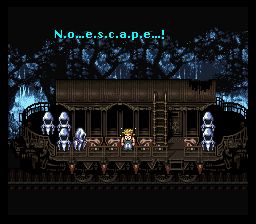 The group completely destroy the camp and make their way south to the Phantom Forest, which is apparently the only direct route to Narshe from there. The forest is a strange place that doesn’t necessarily play fair with navigation, but there are also handy signs erected which point the way the player is expected to go. And the player is expected to go towards a train that’s just sitting there in the forest, taking passengers. This train is the Phantom Train, which is sort of like the Charon of the world of Final Fantasy VI. Charon escorts the dead across the river Styx in Grecian myth, and here, the Phantom Train takes the spirits of the deceased to their final destination. You would think there’d be a way to prevent the living from accidentally crossing over before their time, but the train is just right there for people to get on if they don’t realize what it is. Sabin doesn’t realize, and he drags Shadow and Cyan along to their imminent demise.
The group completely destroy the camp and make their way south to the Phantom Forest, which is apparently the only direct route to Narshe from there. The forest is a strange place that doesn’t necessarily play fair with navigation, but there are also handy signs erected which point the way the player is expected to go. And the player is expected to go towards a train that’s just sitting there in the forest, taking passengers. This train is the Phantom Train, which is sort of like the Charon of the world of Final Fantasy VI. Charon escorts the dead across the river Styx in Grecian myth, and here, the Phantom Train takes the spirits of the deceased to their final destination. You would think there’d be a way to prevent the living from accidentally crossing over before their time, but the train is just right there for people to get on if they don’t realize what it is. Sabin doesn’t realize, and he drags Shadow and Cyan along to their imminent demise.
Throughout the train, the party can recruit restless spirits to join the party, and they join at level 14, suggesting this is roughly where Cyan, Sabin and Shadow should be. If the imperial troops had given experience points, Cyan would be level 14, so at least he has an excuse for being just one level below the ghost. Admittedly, the rest of the party would also have had to grind to get to 14.
Speaking of grinding, there’ll be none happening on the train. Most enemies drop so little experience, it wouldn’t be worth it to stick around.
The spirit has a special ability called Possess, where it’ll sacrifice itself to instantly kill an enemy, kind of cancelling each other out in a way. The party will be able to find more spirits on the train, and with experience being as low as it is here, there’s no reason to try to retain and level one.
On the Phantom Train, there are enemies called Bombs which have a high chance of exploding automatically when hit. They also have relatively low health, and can be seen as a strength check for the party. If they can take the Bombs out in one hit, they’re at a pretty comfortable level and it can be reasonably assumed that they can handle anything the game can throw at them. If the bombs regularly explode, though, the party might be underleveled just a little bit, but even then there’s some wriggle room.
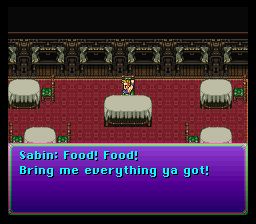 There is an event on the train where Sabin orders food in the dining car, but if this is meant to be a reference to the Greek myth of Persephone eating pomegranate seeds, it misses the point of the original myth because this never comes up again in the entire rest of the game. Apparently, it’s perfectly safe to dine on the Phantom Train, and good for your health too, since the party fully recovers their HP and has all of their status ailments cured. Their MP is supposedly healed as well, but no one in the current party has MP, so I don’t know why the game feels the need to mention this.
There is an event on the train where Sabin orders food in the dining car, but if this is meant to be a reference to the Greek myth of Persephone eating pomegranate seeds, it misses the point of the original myth because this never comes up again in the entire rest of the game. Apparently, it’s perfectly safe to dine on the Phantom Train, and good for your health too, since the party fully recovers their HP and has all of their status ailments cured. Their MP is supposedly healed as well, but no one in the current party has MP, so I don’t know why the game feels the need to mention this.
The train also features a swordsman named Siegfried who has a very weak attack, goes down in one hit, and then steals the treasure that the party was about to loot from one specific treasure chest. If this is the game’s way of parodying Gilgamesh, it falls flat because Gilgamesh was fun and you grew to care about him throughout the game. Siegfried is just there to be a random pest for no reason, and then the player might not ever see him again, depending on what they do in the second half of the game. For some players, this may be the one and only time he’s ever seen.
Eventually, the party reaches the front of the train, and acting upon instructions from a man named the Impresario as well as a note left in the engine room, the party attempt to stop it, but only end up making the train mad. And thus, the infamous fight with the Phantom Train begins.
What’s notable about the Phantom Train fight is that it’s presented as the party running ahead of the train, and considering the speeds the train must be going at, that’s incredibly impressive.
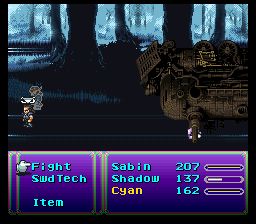 With the party around level 12 to 14, the fight should take about two turns to beat, especially if players use everyone’s best moves. It is certainly possible with a little bit of grinding to take the train out in one Suplex, but if they’re motoring through the game at a relatively fast clip and aren’t taking the time to train up and overpower enemies, it’ll require a couple Shurikens, a couple Suplexes and at least one Dispatch. Even a party that regularly explodes Bombs should probably be able to handle the Phantom Train, but if they can’t, then grinding is unfortunately going to take a while.
With the party around level 12 to 14, the fight should take about two turns to beat, especially if players use everyone’s best moves. It is certainly possible with a little bit of grinding to take the train out in one Suplex, but if they’re motoring through the game at a relatively fast clip and aren’t taking the time to train up and overpower enemies, it’ll require a couple Shurikens, a couple Suplexes and at least one Dispatch. Even a party that regularly explodes Bombs should probably be able to handle the Phantom Train, but if they can’t, then grinding is unfortunately going to take a while.
When the Phantom Train is beaten, it agrees to let the party off, but it has to fulfill its duty, too. So Cyan and everyone else gets off… just as Cyan’s wife and son get on. Given the timing, probably everyone who died at Doma Castle got on the train, but Cyan could only see his family leaving him forever, victims of the Empire.
The party then journeys to Baren Falls (Cecil, they spelled your kingdom wrong!) and after Shadow departs for greener pastures, Sabin and Cyan jump. This triggers a fight against a number of Pirahna and mercifully, the game heals the party first. At the end of this gauntlet is a miniboss which has a powerful counterattack, and once everything has been defeated, the party receives… one Remedy. I’m not feeling very rewarded for my effort.
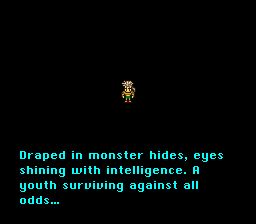
When Cyan and Sabin wash up on shore, a wild boy from the Veldt named Gau finds them. Gau is rather unique as Final Fantasy protagonists go. He can use enemy attacks, but only if he leaves the party for a few battles in order to study the enemies he encounters. He can then take on the characteristics of these enemies, right down to using their attacks and embodying their strengths and weaknesses. He can only learn from enemies on the Veldt, so the only real way to power him up is to run around in this one area of the game and grind a bit. Also, only enemies that have been encountered at any other point in the game will show up on the Veldt, so if the party hasn’t faced something yet, Gau can’t learn how to mimic them.
This ability can be hard to fully master in the original SNES version because there’s no way to track which enemies the party has encountered unless one is keeping copious notes while playing, and who in their right mind would compile a lengthy series of notes like this while playing a Final Fantasy game? In subsequent versions of the game, a Bestiary was added, allowing for players to actually keep track of what they’ve already encountered.
One benefit to having Gau in the party is that, once one of his Rages has been selected, he’ll be uncontrollable and will act like a Berserker, automatically attacking the enemy according to whichever Rage the player selects. He doesn’t have to wait for Cyan to input his SwdTech command, he’ll automatically keep the damage flowing while the player waits to unleash Cyan’s best skills. This suggests that Gau (and at least one other character that the party will meet later) has good synergy with Cyan.
Cyan and Sabin make their way across the Veldt, accumulating no experience points yet again, but at least they’re earning money and occasionally items. Randomly, Gau will appear in battle asking to be fed, but neither man has any food on them to give to the young boy, so they have no choice but to either flee battle or attack Gau to drive him away. Eventually, they find the city of Mobliz, where they can buy Dried Meat for Gau to eat so that they can finally recruit him into the party. There is also an equipment shop with various weapons and armour. Cyan and Sabin can gear up here, but although the entire cast of characters (up until this point, anyway) are shown in the menu, the game doesn’t disclose what each piece of gear’s substats are, just their defense rating, so it’s hard to tell if something is legitimately an upgrade or not, making it a little hard to shop for anyone else.
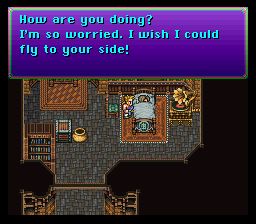 In Mobliz, the party meets someone from Maranda who had been forced to fight for the Empire, but when he tried to desert, he was grievously injured and managed to drag himself to Mobliz. Lola, the love of his life, has been writing to him, but he can’t even pick up a pen right now to write back. Such is the cruelty of the Empire.
In Mobliz, the party meets someone from Maranda who had been forced to fight for the Empire, but when he tried to desert, he was grievously injured and managed to drag himself to Mobliz. Lola, the love of his life, has been writing to him, but he can’t even pick up a pen right now to write back. Such is the cruelty of the Empire.
After recruiting a level 14 Gau, he mentions a shiny treasure he has that’s been buried near Crescent Mountain to the south, so Cyan and Sabin follow him there, where they find out that Gau’s treasure is an underwater breathing apparatus that someone in Mobliz had mentioned would help them to survive a trip through the Serpent Trench that winds from Crescent Mountain all the way to Nikeah. What a coincidence! And unlike the one from Final Fantasy IV that connected Mysidia to Baron, this version is actually playable, although it’s like the rafting minigame in that there’s not a lot the player can do to control the party on their trip other than to occasionally make a decision at a fork in the road.
From there, the party just needs to board a ferry to South Figaro, and it’s automatically assumed that they make it back to Narshe. All in all, Cyan and Sabin’s Bogus Journey takes approximately three hours to play, whereas the other two scenarios take about a half an hour each. It’s at this six hour mark that Narshe officially joins the war, whether they want to or not…
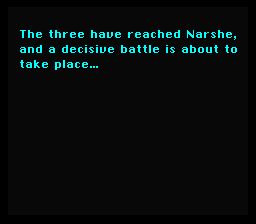
We pick things up back in Narshe, where Banon is still trying to secure the city’s help in the war against the Empire. It’s assumed that if they remain neutral, the Empire won’t come for them, but they assume wrong, for the Empire have arrived and wish to lay siege to them in order to get at the Esper located on the mountain. With the gang back together and sporting new allies to boot, the Returners prepare to defend Narshe.
This battle plays out similarly to the moogle battle near the start of the game, with three parties defending Narshe and trying to prevent the imperial troops from reaching Banon. If any of them do, it’s game over because Banon is apparently this world’s load-bearing character. Every playable character available at this point of time (except Shadow) can be divided up into these three groups and it’s up to the player to make sure the teams are balanced. Admittedly, some characters are a lot better at defeating the imperial troops than others. Bio Blaster is a very handy tool that can clear an entire enemy party at once, for example, making Edgar one of the best characters to take into battle. A great way to play catch up with party members who might be lagging behind would be to pair Edgar with the lowest level character and then try to get into as many battles as possible with this duo, firing off Bio Blaster as quickly as possible and eating items between battles if healing is necessary.
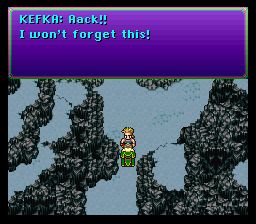
After defeating the entire unit sent to roll over Narshe, all that’s left is to drive back Kefka. He actually plays fair and doesn’t flee at the first sign of danger this time. He lets himself take a bit of punishment before running.
With the Empire driven back, the party checks on the Esper, and suddenly it reacts once more to Terra and she turns into some kind of fuzzy fae thing and flies off in a feral panic. The Returners have no choice but to split apart once more in order to both pursue her and possibly figure out what she’s become, and stay in Narshe to defend the frozen Esper that caused all of this in the first place. The Empire must not get their hands on either Terra or the Esper.
It turns out that Figaro Castle has long ago devised a way to travel beneath the sand and under the mountains to the west, and it’s this method that they’re going to use in order to search for Terra. The player must then decide which four characters to take. I don’t think there’s any real “wrong” answer here. In theory, Edgar should come along for sure because it’s his castle, and Sabin hasn’t been back in Figaro for such a long time and it would probably be nice to take him along. In practice, it’s almost entirely personal preference how the party is set up. Unlike the job system in Final Fantasy III or the rotating cast of characters in Final Fantasy IV, this game doesn’t try to force anything here and makes no suggestions. There’s no one in Narshe waiting by a lamppost, eager to tell the player that they hear Gau’s Rage abilities power up even more in the region to the west of Figaro. (They obviously don’t.)
Once the party has traveled beneath the mountains, they venture onward to the town of Kohlingen, where they find out Terra went south to Jidoor. If the player decided to only take three party members, Shadow’s waiting for them here and will join the party. If the party’s full, he’s not interested.
In both Kohlingen and Jidoor, there are equipment upgrades that are actually pretty easily affordable for the party. At this point, its safe to assume the developers are thinking players are buying items, too. That said, there’s generally also more than enough items being dropped by and stolen from enemies, as well as looted from treasure chests and pots and clocks and so on, that players will only need to buy an occasional few items. At this rate, the party will have more money than they’ll know what to do with.
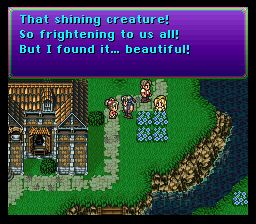 In Jidoor, they find out that Terra has once again moved on, this time deep into the mountains. Unfortunately, this puts her somewhere in Zozo. In Star Wars, the Mos Eisley Cantina was known as a wretched hive of scum and villainy. In Final Fantasy VI, you might as well consider the entire town of Zozo to be a wretched hive. A citizen of Jidoor warned the party that everyone in Zozo lies, and they really meant it.
In Jidoor, they find out that Terra has once again moved on, this time deep into the mountains. Unfortunately, this puts her somewhere in Zozo. In Star Wars, the Mos Eisley Cantina was known as a wretched hive of scum and villainy. In Final Fantasy VI, you might as well consider the entire town of Zozo to be a wretched hive. A citizen of Jidoor warned the party that everyone in Zozo lies, and they really meant it.
I don’t know what it is about the music in Zozo, but it’s one of my favourite pieces in the entire game. Players are cautioned about the unsavory characters in the town, and indeed, there are random encounters throughout Zozo. Everyone here wants to kill the party and loot their corpses. This is less a town and more a dungeon.
One of the random encounters, a Harvester, also will randomly steal several thousand GP from the party, but players need not tear their hair out in frustration like they would if they were playing Lunar: Dragon Song because the GP is returned at the end of battle, after killing the Harvester. What’s absolutely hilarious is that occasionally, the Harvester will trigger its theft attempt as its dying move, but it’s pointless because the GP will be returned to the party a moment later.
One of the main gimmicks of Zozo is that there will be several NPCs who are more than willing to tell the player what time it is, but will often give conflicting information like they’re Cole Cassidy on April Fools Day. The player is expected to remember that everyone in Zozo is a liar and use logic to figure out what time it actually is, in order to solve an optional puzzle and find the Chain Saw, an incredibly powerful tool for Edgar.
In the meantime, there’s a magical girl to be found. Terra is lying in rest at the top of one of the towers in the town, somehow safe despite the amount of villains Zozo contains. As if on flavour for the kind of place Zozo is, there are several items which can be found on the way to where Terra rests that can power up Locke here, from a weapon that sometimes automatically uses Steal when attacking to a relic that changes Steal to… Capture. Later versions of the game, and later instances of this ability would choose to translate it as “Mug” because the character is both attacking and trying to steal something from the enemy, so in essence, they’re trying to mug someone. Capture makes it sound like the skill has something to do with the Beastmaster class, or could possibly help Gau learn more Rages.
This is where we meet Ramuh for the first time. Well, okay, Ramuh’s been in Final Fantasy games before, he’s been a staple of the series since the third game, but this is the first time we really get to talk to him, get to know him. Here, he’s presented as a kind of father figure, a characterization that would persist throughout the rest of the series, even in the game where the summons are actually evil and trying to subjugate everyone.
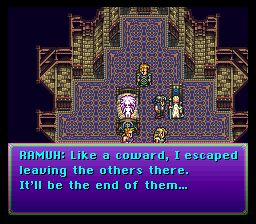 Ramuh reveals that Espers and humans used to live together, until people started extracting magic from them and infusing humans with this power. A devastating war was fought which would become known as the War of the Magi. In order to prevent any further tragedies, the Espers withdrew into a world of their own creation in order to live apart from the human world.
Ramuh reveals that Espers and humans used to live together, until people started extracting magic from them and infusing humans with this power. A devastating war was fought which would become known as the War of the Magi. In order to prevent any further tragedies, the Espers withdrew into a world of their own creation in order to live apart from the human world.
However, over time, people tend to forget. Humanity is actually pretty bad at remembering things that paint their ancestors in a bad light, and in some ways, humanity sometimes wills themselves to forget on purpose. The War of the Magi has become a legend, meaning that the consequences have been forgotten, but the promise of power has not. Humans recently found the land the Espers created, and were quickly thrown out, but not before capturing many Espers and taking them to a research facility where their powers are being drained and placed in the bodies of humans, just like a thousand years before. This is why there are humans who are capable of using magic. The Espers also built additional defenses around their land, including a door to keep everyone out.
Ramuh suggests that by freeing his fellow Espers from the research facility, one of them should help Terra come to terms with her own existence. The Esper side of her is frightening to her, and as a result, she’s quite feral right now. She huddles in bed, trembling in fear, and the best Ramuh could do was summon her to his side in order to protect her.
I do take issue with one thing he says. He claims he was a coward for escaping the research facility alone and fleeing, but I think he was fleeing in order to find help. He might not have intended to find help, but by escaping, he gave everyone else a chance. When Nala fled the Pride Lands in The Lion King, she wasn’t being a coward, she was looking for help in order to take down Scar. Ramuh would not have met the Returners if he had stayed in the facility, but now that he has, he can arrange for everyone else to be broken out.
And so this is where the party are headed next. They must get to the continent to the south somehow, and that requires an airship.
Before they go, Ramuh reveals a tragic truth about the transfer of an Esper’s power. The only true and pure way to give a human the power of an Esper is through the use of Magicite. However, to turn an Esper into Magicite is lethal to them, for Magicite is what’s left of them when they pass away. In order for humans to use magic, it requires the death of an Esper.
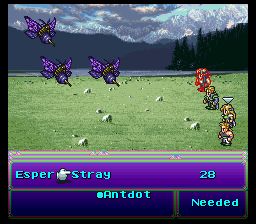
Ramuh chooses to willingly sacrifice himself to give the Returners his power, and also offers to give them the Magicite from a few of his fellow Espers who died helping him escape. Along with classic summon Ramuh, the party is armed with the healing power of the Kirin for the first time in the series, the silencing power of the Siren for the first time in the series and the confusing power of the recent 2022 game Stray for the first time in the series.
Magicite, when equipped to a party member, will grant access to that Esper as a summon once per battle. Characters will also gradually learn the magic contained within at different rates, depending on the magic spell and the Magicite. There is some overlap, since Siren contains Fire for some reason, and Ifrit will contain Fire and Fire 2, and will teach Fire at a somewhat faster rate than Siren does. Kirin is the party’s source for healing magic at this point in the game, although the much more powerful Cure 2 takes 100 Magic Points to learn. Comparatively, it’ll only take 20 Magic Points to learn Cure from Kirin.
The party decides they need to take the fight to the Empire, and now the game requires Celes to be in the party, since she knows the Empire well. Locke volunteers to go along with her, claiming it’s for treasure hunting, so that leaves two slots left for two more characters to accompany them.
Back in Jidoor, the party must find some way to go to the southern continent. Suddenly, they’re accosted by… the Impresario? The guy who was on board the Phantom Train?
Anyone familiar with the game probably knew this was coming when they read through the Phantom Train section. This is an example of a sloppy translation error, possibly due to a rushed schedule. The Impresario on board the Phantom Train is the conductor of the train and not an orchestral conductor, but it’s possible someone noticed there were two Conductors in the English script, referring to two different people, and decided to change one of them to Impresario in order to alleviate confusion. However, the process of changing Conductor to Impresario might’ve accidentally caught the Phantom Train’s conductor as well and in the end, it did nothing to stop people from being confused. Perhaps a little more time to proofread the script could’ve cleared something like this up.
The Impresario – the real one – is in a panic. There’s a mysterious man known as the Wandering Gambler who wants to court the lead actress in the Impresario’s opera and make her his wife. He’s not going to give her much of a choice, though, for he plans on abducting the singer.
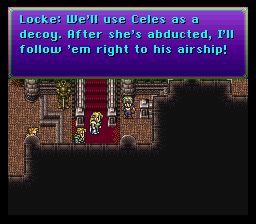
Locke: Live bait.
Celes: Good idea- hey!
Locke: Come on, Celes. You have to create a diversion.
Celes: What do you want me to do? Don a dress and sing an opera?”
By sheer coincidence, the Wandering Gambler owns the world’s only airship. The good news is that an airship would ferry them south in no time. The bad news is that it’s never fun to deal with someone who has a monopoly on a resource or a service. Still, if they want to get to that Magiteck Research Facility in a hurry, they might not have a choice, so they concoct a plan as they travel south to the Opera House.
What they don’t know is that Ultros is there and he plots to foil their plan for seemingly no reason other than he wants to sew chaos.
The opera from Final Fantasy VI is a scene that has become very iconic of the Final Fantasy series, and is symbolic of the developers’ desire to create memorable scenarios in their games. It goes above and beyond their efforts in previous games and helps to show off what the SNES was capable of. They even wrote an original opera for the scene. That said, they did compromise a little by not actually trying to perform the opera, opting instead to use a generic synthesized voice. It wouldn’t actually be Squaresoft that would experiment with voice acting in their games, but considering how much Square did to push the medium forward, I think that’s perfectly fine.
The opera, Maria and Draco, begins in a war torn world. The nations to the West and the nations to the East are in conflict. Draco, hero of the armies of the West, keeps Maria in his heart as he fights, for thoughts of her give him strength. On a lonely battlefield, Draco sings to his beloved, hoping that somehow she might sense his feelings…
Meanwhile, Locke goes to check up on Celes. It is for this reason that the game requires these two characters to be in the party that heads south to the opera house, so that Celes can star in the opera and so that Locke can be the one to give her a pep talk before she begins.
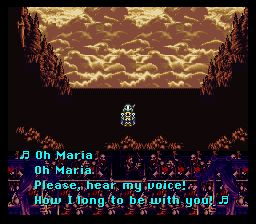 Because Celes is starring in the opera, the player gets to act out the next scene. This requires at least some passing knowledge of the script, so in the guise of Celes reviewing the material one last time before she goes out on stage, the player reads the score. It’s actually pretty impressive that Ted Woolsey translated the opera so that some of it would rhyme, but sadly, the meter is all wrong in places and it’s probably for the best that Squaresoft didn’t get live singers to perform it. They probably would’ve felt obligated to record English vocals for the international audience to replace the original Japanese.
Because Celes is starring in the opera, the player gets to act out the next scene. This requires at least some passing knowledge of the script, so in the guise of Celes reviewing the material one last time before she goes out on stage, the player reads the score. It’s actually pretty impressive that Ted Woolsey translated the opera so that some of it would rhyme, but sadly, the meter is all wrong in places and it’s probably for the best that Squaresoft didn’t get live singers to perform it. They probably would’ve felt obligated to record English vocals for the international audience to replace the original Japanese.
Sadly, the armies of the West lose the war and the armies of the East seize Maria’s castle. Prince Ralse of the East forces himself upon Maria and marries her against her will. However, her heart belongs to Draco even now, and she longs to see him again.
The opera minigame is actualy a lot simpler than the game lets on. There are several lines to memorize, but the player only needs to remember the opening words of each verse, and Celes will do the rest. The player is then expected to control Celes as Maria dances with a spectre of Draco, then picks up a bouquet of flowers and climbs up to the balcony to toss them.
If the player messes up at any point in this, the opera fails and must be done over from the beginning. This is a little annoying, especially if one accidentally takes Celes to the wrong part of the castle to try to toss the flowers off. Such a mistake will absolutely ruin the opera beyond repair, apparently. The player also has a limited number of tries to get the opera right.
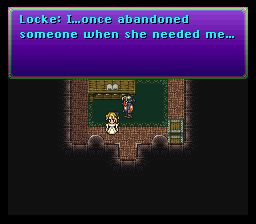 The opera’s lyrics feel very significant to a story that has been brewing in the background throughout the game. Locke confesses to Celes before the performance that he saved her because he was reminded of a woman named Rachel whom he loved and was unable to save. He claims he abandoned her when she needed him the most, but he’s taking on a lot of guilt for absolutely no reason. To Locke, saving Celes feels like saving Rachel, who lost her memory while on an adventure with him and then later on lost her life.
The opera’s lyrics feel very significant to a story that has been brewing in the background throughout the game. Locke confesses to Celes before the performance that he saved her because he was reminded of a woman named Rachel whom he loved and was unable to save. He claims he abandoned her when she needed him the most, but he’s taking on a lot of guilt for absolutely no reason. To Locke, saving Celes feels like saving Rachel, who lost her memory while on an adventure with him and then later on lost her life.
Oh my hero, so far away now.
Will I ever see your smile?
Love goes away, like night into day.
It’s just a fading dream.
In a developer interview, it was revealed that the adventure that Rachel and Locke had gone on was so that Locke could prove to Rachel’s father that he’s more than just some common thief. What we do see in the game is Rachel pushing Locke off of a collapsing bridge and falling in his stead. When she comes to, she has no memory of anything, and her father blames him. They had agreed to be married, but now she doesn’t know who he is and he’s pretty much thrown out, banished and told never to come back again. It wasn’t that he abandoned her, it was that he was not welcome there, and even Rachel herself told him to go because he was upsetting her father.
Must I forget you? Our solemn promise?
Will autumn take the place of spring?
What shall I do? I’m lost without you.
Speak to me once more!
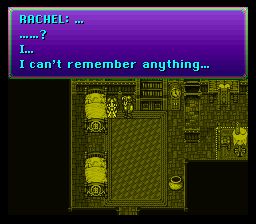 An imperial attack on Kohlingen fatally wounds her and in her final moments, her memory returns and she cries out for Locke, begging for him to be by her side, but she passes away long before Locke ever knew about the attack.
An imperial attack on Kohlingen fatally wounds her and in her final moments, her memory returns and she cries out for Locke, begging for him to be by her side, but she passes away long before Locke ever knew about the attack.
The story gets a little weird and potentially uncomfortable, for Rachel’s body was preserved by a strange old man living in Kohlingen, probably against the wishes of her family. This gives Locke motivation to search for a legendary treasure that can revive the dead. This gives him two motivations in life: to find the treasure so that he and Rachel can be reunited, and to fight the Empire because he can never forgive them for what they did to her.
So gently, you touched my heart.
I will be forever yours.
Come what may, I won’t age a day,
I’ll wait for you, always…
Ted Woolsey apparently spent plenty of time on the opera scene, but subsequent versions of the lyrics were better able to match the music, especially when the song was given a fresh translation for the Game Boy Advance, and then rewritten for live concerts.
As Maria and Ralse dance on stage, Locke finds a letter left by Ultros, vowing that he’s going to ruin the opera as revenge, so Locke lets the Impresario know. Meanwhile, in the opera, survivors from the war have snuck up on the castle and attempt to take it back from Ralse and the East! Draco himself arrives and Ralse can’t stand that someone might take Maria away from him. He won her fair and square! So he challenges Draco to a duel, unaware that Ultros plots against Maria’s actress, and intends to push a heavy weight down on her, killing her instantly.
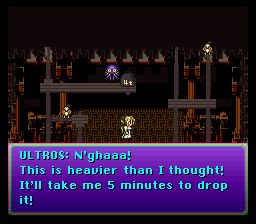 Ultros is a bit of a clownish character, though, and somewhat of a buffoon in nature, so he doesn’t realize how much work it’s going to take until he actually attempts to push the weight down. “It’ll take me 5 minutes to drop it!” he says, which is an oddly specific and precise observation. The party now has five minutes to reach Ultros and stop him from dropping the weight, or else the opera will be ruined. This is the first timed mission in the game, but unlike the timed missions from Final Fantasy V, the timer is a lot more lenient, especially if most of the rats that block the way scurry onto portions of the rafters that the party doesn’t need to use, completely bypassing those fights entirely.
Ultros is a bit of a clownish character, though, and somewhat of a buffoon in nature, so he doesn’t realize how much work it’s going to take until he actually attempts to push the weight down. “It’ll take me 5 minutes to drop it!” he says, which is an oddly specific and precise observation. The party now has five minutes to reach Ultros and stop him from dropping the weight, or else the opera will be ruined. This is the first timed mission in the game, but unlike the timed missions from Final Fantasy V, the timer is a lot more lenient, especially if most of the rats that block the way scurry onto portions of the rafters that the party doesn’t need to use, completely bypassing those fights entirely.
Surprisingly, when Ultros and the party fall off of the rafters and onto the stage, it doesn’t ruin the opera. You’d think it would, considering how fragile the opera was before, especially since both Draco and Ralse are knocked out here. Thinking on their feet, Locke declares himself to be the hero of the opera, and Ultros takes for himself the part of octopus royalty, staging a second duel to win the hand of Maria. Upon defeating Ultros quite easily, Locke thinks he’s saved the opera. This is when Setzer, the Wandering Gambler, decides to make his entrance, and he arrives to capture Celes for himself and make her his! He swoops in like the Phantom of the Opera and carries her off to his airship while everyone else can do nothing but just stand there and watch.
